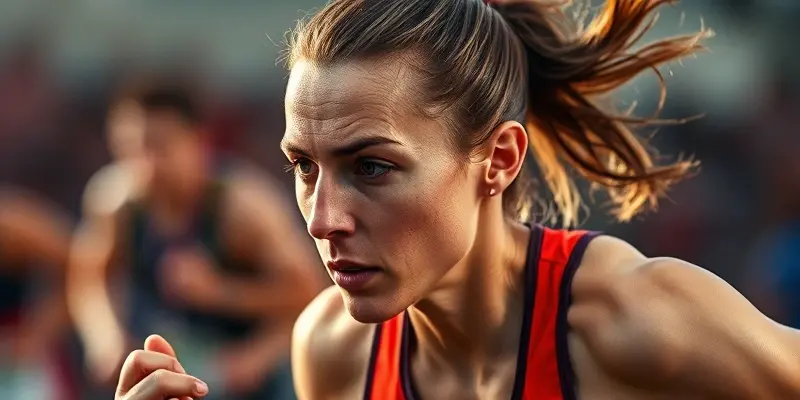How Video Analysis Can Accelerate Recovery and Prevent Injuries: A Guide for Fitness Enthusiasts
Have you ever wondered why so many athletes and weekend warriors battle nagging injuries or slow recoveries? Whether you’re a new runner, dedicated gym-goer, or elite competitor, bouncing back from injuries (and staying injury-free) can feel daunting. Good news—advances in video analysis are empowering everyday athletes to train smarter, heal faster, and return to peak performance. Let’s break down how you can use this powerful tool on your fitness journey.
Why Are Injuries So Common?
Injuries often aren’t just “bad luck.” Across sports like running, soccer, swimming, and volleyball, most setbacks stem from repeat strain, poor technique, or unnoticed weaknesses. If your knee always hurts after running or your shoulder aches after serving, your movement patterns may be to blame.
Many common injuries—think patellar pain, IT band syndrome, shoulder impingement—develop slowly from subtle mechanical errors. The good news? Most of these risks can be spotted early and corrected.
How Video Analysis Works for Athletes
Video analysis is more than watching slow-motion replays. It’s a science-backed approach using simple cameras, apps, or specialized tools (like motion capture systems and wearable sensors) to break down:
- Your posture and alignment
- Joint angles during movement (like a squat or kick)
- Timing and sequence of muscle activation
What’s the real payoff? By reviewing your own footage, coaches and therapists can pinpoint risky form errors, customize drills, and check your progress—speeding up healing and making injuries less likely to come back.
Core Benefits
- Early Detection: Spot issues before they become injuries
- Personalized Corrections: Tailor drills to your specific mechanics
- Progress Tracking: Visual comparison of “before and after” keeps you motivated and honest with your rehab, complementing your injury recovery checklist
Practical Strategies: How to Use Video Analysis in Recovery
Here’s how any athlete can turn video into action:
Technique Correction
- See what the eyes miss: A coach or a simple smartphone can record your movement—from running stride to tennis serve. Play back in slow motion to spot posture or alignment flaws you couldn’t feel, like a collapsing arch, hunched shoulders, or bent wrist.
Choose Targeted Drills
- Match drills to your needs: After identifying weak links (say, a sluggish left hip or rotating knee), select exercises to strengthen and correct these patterns—making rehab and prevention more efficient.
Monitor Safe Return-to-Play
- Objectivity over guesswork: Use repeat videos to prove you’ve corrected the risky patterns before ramping up intensity. This is vital for reducing re-injury risk.
Example: Identifying Risks in Different Sports
| Sport | Frequent Injuries | Video Focus Points ||————|——————————|——————————|| Running | Patellar pain, Achilles | Knee tracking, foot landing || Soccer | Muscle strains, tendonitis | Kicking form, hip motion || Swimming | Shoulder impingement | Arm entry, stroke symmetry || Volleyball | Shoulder & elbow pain | Arm swing, jump takeoff || Rugby | Concussion, ligament injuries| Tackle technique, landings |
Motivation and Mindset
- Visual Progress: Watching yourself improve—from limping to running smooth again—is powerful for morale.
- Clear Goals: Video feedback offers concrete, trackable milestones, keeping your rehab plan focused and rewarding.
Beyond the Screen: Nutrition, Biomechanics, and Mindset
Your body repairs itself best when biomechanics, nutrition, and mindset work together. For example, fixing a runner’s knee motion while supporting tissue healing with anti-inflammatory foods—and reinforcing progress through positive visualization—creates a holistic plan for lasting results. Consider integrating practices like visualization for healing to boost your recovery further.
Tip: Use your video session as a “check-in” for all aspects of your health routine, not just your form.
Limitations and Realistic Expectations
While video analysis is a game-changer, it isn’t magic. Some overuse injuries or deep tissue damage may not be obvious on film and require medical diagnostics. Also, technique isn’t the only factor in injury—rest, recovery, and overall fitness matter too.
Best results come when video is combined with professional coaching, a solid nutrition plan, and structured rehabilitation.
Conclusion: Make Video Analysis Part of Your Recovery Playbook
No longer just for Olympians, video analysis is now accessible to anyone with a smartphone or fitness tracker. It can reveal those hidden habits that hold you back—and help you recover smarter, not just harder.
Ready to level up your recovery? Grab your phone, analyze your moves, and partner with a coach or therapist who understands the science. You’ll not only heal faster—you’ll come back stronger than ever.
Stay strong, stay curious, and make every move count!
Author: GymPulse Lead Trainer (10+ years of sports performance and injury recovery coaching)
Have you tried video analysis for your training or recovery? Share your experience in the comments and inspire others on their fitness journey!

